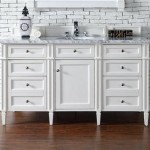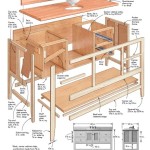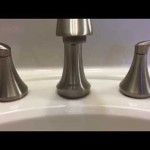Bathroom Drain Pipe Sizes: A Comprehensive Guide
The bathroom is a vital space within any home, and the efficient functioning of its drainage system is crucial for both hygiene and comfort. Understanding the appropriate pipe sizing for your bathroom drainage is critical for preventing clogs, ensuring proper water flow, and maintaining the longevity of your plumbing system. This article provides a comprehensive guide to bathroom drain pipe sizes, outlining key factors to consider, common pipe materials, and practical tips for ensuring optimal drainage.
Factors Influencing Bathroom Drain Pipe Sizes
Several crucial factors influence the appropriate pipe sizes for bathroom drainage. These factors include:
- Fixture Type: Different bathroom fixtures, such as sinks, showers, bathtubs, and toilets, produce varying water volumes and flow rates. For example, toilets require larger pipes than sinks due to their higher water discharge.
- Number of Fixtures: The number of fixtures connected to a single drain line directly impacts the required pipe size. Multiple fixtures sharing a single drain line necessitate a larger pipe to accommodate the combined water flow.
- Water Flow Rate: The rate at which water flows from fixtures plays a significant role in determining the appropriate pipe size. Higher flow rates demand larger pipes to prevent clogging and ensure efficient drainage.
- Distance to Main Drain: The distance between the bathroom fixtures and the main drain influences pipe sizing. Longer distances necessitate larger pipes to maintain adequate water flow and pressure.
- Local Plumbing Codes: Building codes in various regions dictate minimum pipe sizes for bathroom drainage to ensure safe and efficient plumbing. These codes should be strictly adhered to during any plumbing installation or renovation.
Common Bathroom Drain Pipe Materials
Bathroom drain pipes are typically constructed using durable materials designed to withstand the constant exposure to water and waste. The most common materials include:
- PVC (Polyvinyl Chloride): This lightweight, versatile material is a popular choice for bathroom drain pipes. PVC pipes are corrosion-resistant, easy to install, and relatively inexpensive.
- ABS (Acrylonitrile Butadiene Styrene): ABS pipes are another common option, providing similar properties to PVC. They are known for their impact resistance and ability to withstand freezing temperatures.
- Copper: While less common than PVC and ABS, copper pipes are a durable and long-lasting option for bathroom drainage. Copper is corrosion-resistant but can be more expensive to install than other materials.
- Cast Iron: Cast iron pipes were commonly used in older homes but are now less popular due to their weight and potential for corrosion. However, they offer excellent durability and soundproofing properties.
Recommended Bathroom Drain Pipe Sizes:
The following table provides a general guideline for recommended pipe sizes for common bathroom fixtures based on standard drainage requirements:
| Fixture | Recommended Pipe Size (inches) | |---|---| | Sink | 1.5 | | Shower | 2 | | Bathtub | 2 | | Toilet | 3 |These recommended sizes are based on average water flow rates and fixture usage. In some cases, it may be necessary to use larger pipes, especially when multiple fixtures share a common drain line or when dealing with higher flow rates or longer distances to the main drain. Always consult local plumbing codes and a licensed plumber for specific sizing recommendations based on your individual bathroom setup.
Tips for Preventing Bathroom Drain Clogs:
By following these simple tips, you can help minimize the risk of bathroom drain clogs and ensure smooth water flow:
- Prevent Hair and Debris Accumulation: Install hair traps in shower drains and bathtub drains to prevent hair and other debris from clogging pipes. Regularly clean and empty these traps.
- Use Drain Cleaners Sparingly: Chemical drain cleaners can damage pipes over time. Use them sparingly and only for severe clogs, as they are not a long-term solution.
- Flush with Hot Water: Flush bathroom drains with hot water periodically to help dissolve grease and soap buildup.
- Avoid Pouring Grease Down the Drain: Grease can solidify in pipes, leading to clogs. Dispose of grease in a separate container or compost bin.
- Regularly Inspect and Clean Drains: Schedule regular drain inspections and cleaning by a licensed plumber to prevent clogs and maintain optimal drainage performance.
By understanding the factors influencing pipe sizing, familiarizing yourself with common drain pipe materials, and adhering to recommended pipe dimensions, you can ensure proper bathroom drainage and avoid costly plumbing issues. Always consult a licensed plumber for expert advice and assistance in determining the appropriate pipe sizes for your unique bathroom setup.

Pin On Plumbing

Tiling Around Toilet Plumbing Residential Bathroom

How To Vent A Toilet Sink And Shower Drain

Vent Options For Plumbing Drains Fine Homebuilding

Toilet Dimensions Google Search Residential Plumbing Installation Repair

Rough In Plumbing Bathroom Dimensions Jim The Home Guy

What Is The Right Shower Drain Pipe Size

How To Plumb A Toilet Vent Distance Pipe Size

Maximum Length For Fixture Drains Jlc

Sizing A Plumbing Vent Fine Homebuilding







